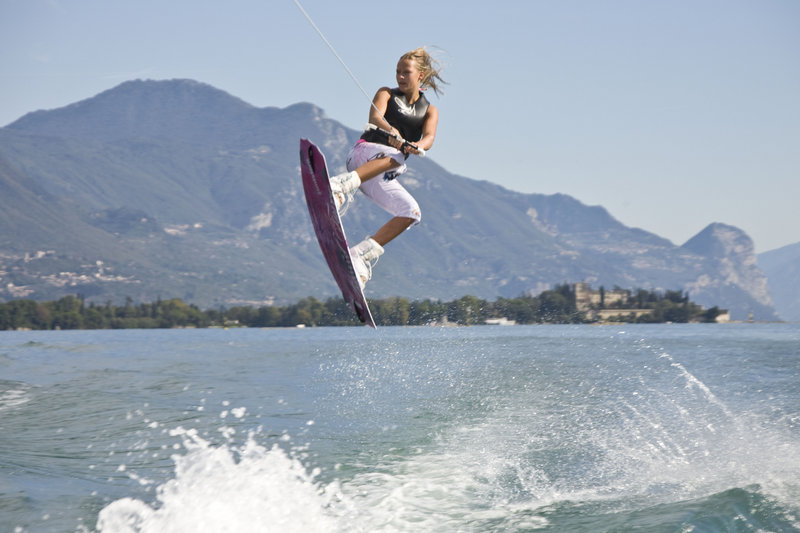The wakeboard you choose will most likely reflect your skill level and the type/style of boarding you want to do. The different features of the wakeboard determine how it will perform. Most wakeboard manufacturers have printed information to help you determine which board is right for you. But often it's just a small description. Use the topics below to help you choose a wakeboard before purchase.
Beginners prefer a board with squared edges. This allows more control and stability for someone who is not ready for big air tricks. More advanced riders prefer a board with rounded edges because air tricks are easier to land. Rounded edges allow less of a chance of catching an edge when landing. They also help the board gain faster speed (allowing for nice lift off the wakes when jumping).
More On Level and Ability
Boards come in single and twin tipped. Single tipped boards are pointed at one end and squared off at the other. These boards are best for one directional riding. Twin tipped boards are rounded at both ends, allowing for easy transition with switching directions and landing tricks. The majority of the boards manufactured today are twin tipped.
Width and Length/Rocker
The wakeboard length averages between 120-150 centimeters. Width is usually between 38-44 centimeters. Longer boards are better for beginners and offer more stability when starting and turning. If uncertain of who all may be riding your wakeboard it is better to get a longer one because longer boards can hold larger people, whereas shorter boards may only be able to hold smaller and lighter riders
More on Width and Length/Rocker
Rocker is how the board curves or angles at its ends. A higher rocker is more rounded bottom and allows easier landings with jumping. Lower rocker is a flatter bottom and allows the rider to accelerate better and gain easier control over the board. Gradual rocker curve is known as continuous rocker. Progressive rockers have a gradual curve along the center and then become more angled under the feet.
Fins
Fins are tracking and turning devices located on the bottom of the wakeboard. Fins help steer the board. In smooth water conditions smaller and thinner fins work well. In rougher water conditions a larger, wider fin helps steer the board when it bounces on the water. Wider fins displace more water and create a suction effect with the board to the water, which helps the board connect to the water.
Bindings and Boots
You want your wakeboard bindings to be snug but not so tight that they are painful. If the boot is too tight you run the risk of breaking an ankle, leg, or knee because the board may not properly release from your foot upon falling. Many bindings offer a lace up feature that allow tightening of the boot once your feet are in the boot.
More on Bindings and Boots
Generally bindings are made of a heavy foam material. Bindings generally have finger holes in the rear that allow for easy foot entrance. Always wet your bindings before entering them. If necessary use binding lubricant.
Try Before You Buy
The biggest piece of advice I can offer is to demo a wakeboard before the purchase. No matter how much research you've done it makes no difference if you are unhappy with how the wakeboard works with your style and skill level. Most pro shops will allow you to demo a board for a fee, however, many shops will remove the cost of the fee in the event you end up purchasing the board from them.
Riding the Wake

On the Lake
Sunday, July 6, 2008
Subscribe to:
Post Comments (Atom)
No comments:
Post a Comment